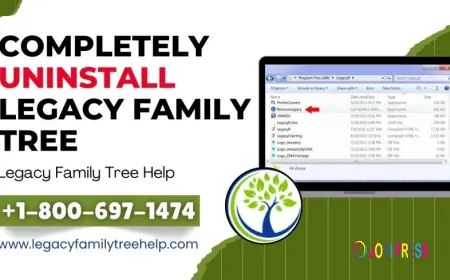Accounting software for self‑storage businesses in 2025
Running a self‑storage business today is as much about financial discipline as it is about doors and square footage, and the right accounting software sits at the center of that reality. What used to be an afterthought.

Running a self‑storage business today is as much about financial discipline as it is about doors and square footage, and the right accounting software sits at the center of that reality. What used to be an afterthought—posting rent, logging a few expenses, sending an occasional invoice—has become a living system that touches every part of the operation, from online reservations and digital access to rate management, lien processes, and multi‑site reporting.
Good software doesn’t just balance debits and credits; it translates the messy, real‑world rhythms of move‑ins, move‑outs, partial months, discounts, late fees, and chargebacks into a clean, timely financial picture you can trust. The payoff is clarity: you know where cash is, which sites are pulling their weight, which customers need attention, and what decisions will move the needle on occupancy, pricing, and profit. In 2025, when competition is fierce and customers expect everything to be instant and touchless, accounting isn’t a back‑office chore—it’s a strategic asset, and the software you choose defines how sharp that asset can be. And if we’re honest, it also defines how much sleep you get at month‑end, how quickly you can answer a lender’s curveball question, and whether your team feels in control or constantly behind.
At the core, self‑storage accounting software has to speak the language of recurring rentals and the nuance of timing. Rent is typically billed in monthly cycles, but reality doesn’t line up neatly with calendars: move‑ins on the 17th, proration rules that differ by site, free‑month promotions that shift revenue recognition, and mid‑cycle upgrades from a 5×5 to a 10×10 that trigger credits or short‑cycle charges. A capable system captures these events in the customer ledger while mapping every transaction to the general ledger with precision—rent to revenue, deposits to liabilities, prepayments to deferred revenue, and write‑offs to bad debt—without forcing you into manual workarounds.
It handles accrual and cash bases with equal confidence, supports automated invoicing and autopay, and reconciles payouts from processors that bundle fees, refunds, and chargebacks into complex deposits. The difference between “we think the numbers are right” and “we know they’re right” often comes down to this invisible plumbing, and when the software gets it right, your team spends less time untangling exceptions and more time improving the business. That’s the quiet magic: fewer sticky notes and late‑night spreadsheets, more confidence when you hit “publish” on the P&L.
Receivables management is where storage accounting meets human behavior, and thoughtful software designs for that tension. Tenants miss payments, cards expire, people move suddenly—so the system needs robust dunning workflows, configurable late‑fee logic, and crystal‑clear aging that separates truly at‑risk balances from timing quirks. It should record every touchpoint—emails, SMS, calls, access denials—so financial decisions align with the operational reality at the gate. Lien processes introduce another layer: notices, holds, auction proceeds, and statutory fees must be accounted for meticulously, with audit trails that stand up to scrutiny. When refunds happen—maybe a tenant vacates early after a rate increase—the software should produce clean credit memos and handle tax adjustments without breaking the audit chain. And because revenue isn’t just rent, the system should track ancillary income—admin fees, locks and boxes, tenant insurance commissions—under distinct accounts, letting you see the true drivers of unit economics and not just the total top line. In practice, that means fewer awkward phone calls, fewer “why is this balance here?” mysteries, and a much clearer picture of who needs a nudge versus who needs a different plan.
On the payables and operations side, self‑storage looks deceptively simple until you’re running multiple sites with rolling maintenance, security upgrades, and seasonality. Accounting software earns its keep by making vendor management and approvals painless while keeping a strict separation of duties. You want purchase orders for larger jobs, three‑way matches when needed, and clear workflows for recurring bills like utilities, internet, pest control, and property insurance. Fixed asset tracking matters more than many expect: cameras, access systems, HVAC, paving, fencing, and roofs carry long lives and significant depreciation, and classifying CapEx versus OpEx correctly avoids distorted profit and missed tax advantages. Prepaids—insurance, software subscriptions, maintenance contracts—should amortize automatically, not rely on someone’s monthly reminder. The software’s job is to ensure every cost has a purpose, every approval has a name, and every dollar spent supports the revenue the sites are designed to generate. When you’ve got this dialed in, invoices stop piling up on someone’s desk, surprise expenses fade, and you stop holding your breath before opening the bank reconciliation.
Taxes and compliance can make or break confidence in the numbers, especially across jurisdictions. Some markets treat storage like a service subject to VAT or sales tax; others carve out exemptions or special rates, and mixed invoices—rent plus retail—complicate returns if your software doesn’t separate taxable and non‑taxable lines by default. In 2025, e‑invoicing mandates and digital tax submissions are expanding, so your system should generate compliant invoices, track tax liability by site and tax authority, and export clean summaries or direct filings where supported.
Corporate tax preparation benefits from consistent books: deferred revenue schedules, depreciation ledgers, and clear accruals for property taxes and bonuses reduce the year‑end scramble. Add in processor compliance (PCI), privacy regulations, and audit requirements from lenders, and the picture is clear: your accounting platform needs to be a trustworthy recordkeeper with role‑based permissions, immutable logs, and readable reports that satisfy both regulators and partners who fund your growth. You would feel the difference when year‑end doesn’t derail operations, your accountant stops sending frantic emails, and audits become a paper‑light formality instead of a fire drill.
Integrations are where self‑storage businesses gain real leverage, because the accounting system is rarely the only brain in the building. Your property management system handles reservations, unit status, rate changes, and access; your accounting software should sync with it in near real time, pulling clean, categorized transactions rather than dumping CSVs that require manual cleanup. Payment gateways and bank feeds must reconcile reliably, matching batched payouts and fees without leaving mysterious suspense balances. Payroll systems should feed labor costs by site and role for clean site‑level P&Ls. If you sell retail items on‑site, a simple POS integration saves hours of rekeying and ensures inventory shrinkage or write‑offs are visible. The best setups use dimensions or classes—site, region, unit type, channel—to slice and dice performance without creating a tangle of duplicate accounts, turning a single chart of accounts into a flexible lens for understanding profitability. When systems actually talk to each other, you stop babysitting imports and start spotting patterns: the promo that fills 10×10s too fast, the site where refunds spike after rate changes, the bank fees that quietly crept up.
Reporting is where the software proves its value to operators, investors, and lenders who don’t live in the day‑to‑day. A generic income statement isn’t enough; you need site‑level and consolidated P&Ls, cash flow that reconciles to the penny, and balance sheets that reflect real liabilities like deposits and deferred revenue. Storage‑specific KPIs—physical vs. economic occupancy, RevPAU (revenue per available unit), average length of stay, churn, DSO, AR aging buckets, discount impact, and rate‑increase effectiveness—should be first‑class citizens, not custom spreadsheets you rebuild every month. Budgeting and forecasting go beyond copying last year: you want scenarios that model rate adjustments, unit mix changes, marketing spend, and seasonality, with variance analysis that ties back to actuals. For capital plans, rolling cash forecasts anchored to lease‑up assumptions and planned improvements help you sequence projects without starving operations. When your software puts these insights a click away, board decks get easier, lender covenants feel less scary, and your team aligns around numbers everyone trusts. And that alignment changes the tone of meetings—from arguing over data to deciding what to do next.
Scaling from one site to many is a rite of passage, and accounting either smooths the path or becomes the bottleneck. Multi‑entity support, intercompany charges, and consolidation with eliminations matter as soon as you spin up a management company, hold properties in separate SPVs, or start franchising. You’ll want standardized charts, templated workflows, consistent rates for management fees, and automated allocation of shared costs like marketing or centralized call centers. Multi‑currency and local tax schemes come into play when you cross borders. Permissions and approvals should map to team structure—onsite managers can code bills but not release payments; regional managers approve; central finance controls bank access. The hallmark of scalable accounting is repeatability: new sites should snap into your system like Lego bricks, not trigger a month of reengineering. If onboarding the next facility feels like copy‑paste rather than controlled chaos, you’ll know you have built something that can actually grow.
Security, reliability, and control are the quiet strengths of good accounting software, and they show up when something goes wrong. Bank‑grade encryption, SSO and MFA, audit logs that actually explain who changed what and when, and backups with tested recovery make incidents survivable. Segregation of duties is not red tape—it prevents costly mistakes and fraud, especially when cash handling or vendor setup is decentralized. Document storage attached to transactions keeps audits quick and vendor disputes short. And because outages and surprises happen, you want a vendor with transparent status communications and a cadence of updates that improve the product without breaking your workflows. You may never notice most of these guardrails on a good day, but when a card processor hiccups or a manager leaves suddenly, you’ll be grateful they’re there.
Choosing and implementing the right platform is half technical, half human. Start by mapping the real flow of money and information in your business: how units are marketed and reserved, when charges post, how payments settle, where exceptions happen, who approves spend, and what your lenders or investors need to see.
From there, favor software that supports your operating model instead of forcing awkward workarounds—clean APIs, storage‑aware revenue logic, robust AR tools, and reporting that mirrors the way you talk about the business. Plan the migration like a project: chart mapping, historical balances, open AR/AP, bank feed cutovers, user training, and a hypercare period where you measure reconciliation speed, close time, and error rates.
The goal isn’t just to “go live”; it’s to close faster, reconcile cleaner, and make better decisions with less friction than you did before. Bring your frontline team into the process early—if they help shape the workflows, they’ll actually use them—and don’t be shy about a pilot site to shake out surprises before a full roll‑out.
The accounting software for self‑storage is about turning a living, breathing operation into numbers that are both accurate and actionable. It honors the complexity—partial months, promotions, multiple sites, auctions, repairs—without making your team live in spreadsheets, and it pushes insight to the surface so you can price confidently, invest wisely, and serve customers without financial blind spots. When it works, you feel it in the cadence of the business: tighter closes, fewer surprises, steadier cash, clearer conversations with stakeholders, and the quiet confidence that comes from knowing your books reflect reality. That’s not glamorous, but it’s the foundation every resilient storage brand in 2025 will stand on. And if you’re building for the long haul, that foundation—calm, reliable, boring in the best way—might be the most valuable asset you own.
What's Your Reaction?
 Like
0
Like
0
 Dislike
0
Dislike
0
 Love
0
Love
0
 Funny
0
Funny
0
 Angry
0
Angry
0
 Sad
0
Sad
0
 Wow
0
Wow
0



















































